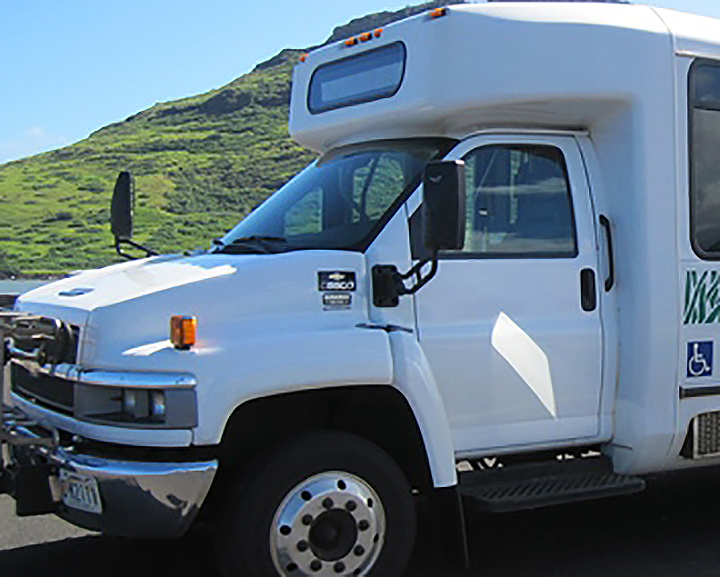Military targets aren’t the only things the Weapon Recovery Boat (WRB) teams are pulling out of the waters at the Pacific Missile Range Facility (PMRF). On January 18th while supporting a Seaborne Powered Target (SEPTAR) mission, WRB-102 recovered a Japanese buoy roughly 2 nautical miles west of Nohili Point.
“From a distance we could see something floating in the water and it wasn’t moving,” said WRB 102’s captain, Bob Ryder. “As we got closer we thought it was a capsized boat. We continued to get closer and saw that it had Japanese writing on the side.”
Ryder radioed into PMRF’s range operations to inform them of the find. The WRB team determined that the floating buoy posed a navigational hazard so they reversed up to the buoy and used the same recovery procedures they would use with recovering a training target.
“Our boat has a tailgate that we drop to recover training targets,” said Matt Munar, the boat engineer. “We lowered that, hooked up a winch to the buoy and pulled it into our well-deck.”
After the recovery the crew carried on with their mission. “We tried to translate the Japanese text by using the internet on our smartphones,” said Ed Horner, WRB 102 advance crewman, “but we could only find a few words.”
Upon returning to Port Allen, the team’s crane operator hoisted the buoy off the boat and onto the pier, where it was wrapped in plastic to protect against the introduction of any unknown invasive species. Dennis Rowley, Range Complex Sustainment Coordinator at PMRF, was notified and took photographs and samples of the barnacles attached to the buoy for testing. The photos were sent to the Department of Land and Natural Resources (DLNR) and National Oceanic Atmospheric Administration (NOAA). Subsequently, additional samples were collected by John Burger, also a Range Complex Sustainment Coordinator at PMRF, as directed by NOAA staff, preserved, and forwarded to NOAA for identification.
PMRF has been informed by NOAA about the origin and type of marine growths found on the buoy, and that they seem to be consistent with other growths that can be traced back to other recovered Japanese tsunami debris. “At least one species, though being alien to Hawaii, was not a potential concern following recovery of the buoy,” said Burger. “This is attributed to the onboard security by the WRB crew, who encased the buoy in plastic immediately after docking and relocated it to a secure location away from the pier.”
NOAA sent the photo of the inscription to the Japanese Consulate. Rowley said. “They informed us that the buoy was in fact Japanese, and came from Onahama port of Fukushima. There is no solid evidence that it was part of the tsunami debris, but it is a possibility.” PMRF’s security department scanned the buoy for radiation and it was determined to be within normal levels and not a hazard to human health.
Since the March 11, 2011 tsunami in Japan, different debris has washed ashore along the beaches of Hawaii and the west coast of the United States. “Most of the light-windage debris (objects that have a high proportion of their mass above the water line) has already washed ashore on the northwest coast of the United States,” said Larissa Leroux, Outreach Specialist for the International Pacific Research Center at the University of Hawaii’s School of Ocean and Earth Science and Technology. “What we’re seeing now is the intermediate-windage debris that is re-circulating westward and hitting the Hawaiian Islands. It is expected to continue for the next six months or longer. The low-windage items are still drifting toward the northwest coast, and little is known about these items.”
Discover more from ForKauaiOnline
Subscribe to get the latest posts sent to your email.







Leave a Reply